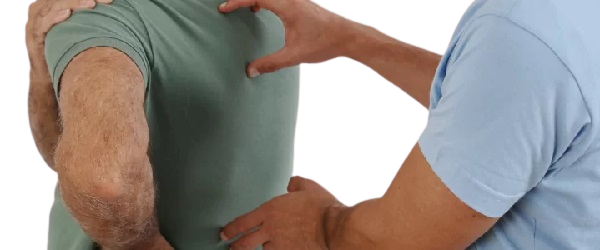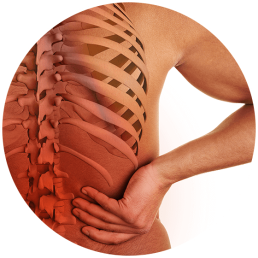Osteoarthritis Symptoms & Treatment Options
Osteoarthritis (or OA) occurs when the joints that connect our bones begin to break down. A joint is a point of articulation where two bones meet to create movement. Because we rely on our joints constantly to perform our everyday tasks, OA can cause chronic discomfort.
Also known as degenerative joint disease, OA affects the cartilage that lines your joints. Cartilage is a rubbery substance that serves a protective function: It provides a slippery surface over which your bones can glide. Without this cartilage, your bones would grind against one another, creating bone-on-bone friction and painful inflammation.
This is essentially what happens in OA. Wear and tear from factors such as aging can eat away at the surface of this cartilage until it completely disappears. Other factors that can speed up this loss of cartilage include:
Risk Factors for OA
Genes: Our genetic makeup often plays a role in the diseases that we will develop during our lifetimes. And, OA is no exception. Certain genes dictate the quality of our cartilage, which also means that certain people will go on to develop OA. For reasons not entirely understood, we also know that women are more likely to develop OA than men.
Body Weight: When it comes to body weight, carrying a few extra pounds can make all the difference in the world as to whether or not we will develop OA. As we gain weight, our bones most cope with the added stress on our joints. Not only this, but researchers now believe that fatty tissue may release proteins that can degrade our cartilage.
Joint Injuries & high demand use : High-impact sports and jobs that require heavy lifting cause the joints to sustain repeated stress. Over time, our joints will warp and change in ways that encourage further cartilage loss. Everything is a delicate balance. For example, standing too often, or conversely, not often enough, can alter your joint quality.
Deformities & Diseases: If you were born with a joint deformity (perhaps without even realizing it), then you are more likely to develop OA. In addition, certain diseases, like hemophilia, enhance your risk of acquiring OA.
Do you have any of these risk factors? If so, it doesn’t mean that you will go on to develop osteoarthritis. However, 27 million Americans will. To beat the odds, see a doctor who can confirm your risk and help you develop a “prevention” plan. As the cliche goes, the best offense is a good defense.
For OA advice that you can trust, contact us. Dr. Martin is a board-certified spine surgeon who specializes in complex cases of joint degeneration.
Osteoarthritis: A Degenerative Cascade
Osteoarthritis affects more than just the cartilage that cushions your bones. OA also attacks your bones, ligaments, tendons, discs, and joint lining (or synovial membrane). If you have been diagnosed with OA, then you may also experience the following joint changes:
Discs & Bones
Disc Changes: Degenerative Disc Disease, or breakdown of the spinal discs, often leads to Oseteoarthrtis and/or vice versa. For those who developed OA first, the loss of cartilage around a joint reduces the amount of space that exists between our bones. When this occurs, it applies extra pressure to our spinal discs, hastening wear and tear and leading to herniated discs.
Spinal Bone Spurs: When your joints lack sufficient cartilage to prevent friction, your body responds by producing bone spurs. Bone spurs are tiny outcroppings of bone that form in heavy-use areas of the spine. You can think of a bone spur as your spine’s version of a callus. Although bone spurs get a bad rap, they only cause problems when they press against spinal nerves. That’s when symptoms like pain and tingling in the arms and legs begin to emerge.
The Soft Tissues
Ligaments & Tendons: Just as OA can cause the body to produce extra bone in the form of bone spurs, so can the existing ligaments and tendons of your spine begin to calcify. In particular, OA causes the ligamentum flavum–the longest ligament in your spine–to harden. Because the ligamentum flavum covers your spinal cord and runs from C2 all the way down to your sacrum, nerve complications can ensue.
Joint Lining: Your synovial membrane (or joint lining) produces a slippery liquid aptly named synovial fluid. Synovial fluid serves to lubricate your joints. OA causes damage to the synovial membrane in the form of irritation. Over time, the synovial fluid becomes much thinner, losing its ability to permit frictionless movement over the joint surface.
However, OA doesn’t just affect the spine. Weight-bearing joints, like the hips and knees, also suffer. And, even your thumbs and big toes can be affected.
Symptoms of Osteoarthritis
The symptoms of OA will develop gradually, over the course of many years. Truth be told, 50% of adults over the age of 65 will experience OA of the knee during their lifetimes. Estimates for spinal osteoarthritis are similar, but much less researched.
For those who do go on to develop OA, the symptoms will depend on which joints suffer changes and the degree of the damage.
Do you have any of these OA symptoms? Although OA cannot be reversed, you can take action to prevent your condition from becoming worse.
Diagnosing Osteoarthritis & Early Treatments
If your doctor suspects that you have OA, then he or she will need to order imaging tests. Although MRIs can reveal cartilage damage, usually a simple x-ray does the trick. An x-ray won’t allow your doctor to view the soft tissues of your spine, but he or she will be able to see your bones. If your vertebrae have already begun to form bone spurs, then chances are, you have OA.
In addition, your doctor will likely check your blood to make certain that you don’t have rheumatoid arthritis (RA). Although the symptoms of RA and OA are similar, signs of RA can be detected in your bloodstream.
Before recommending surgery to repair your joints, your doctor will likely suggest a series of conservative therapies and pain management techniques. Anti-inflammatory drugs, physical therapy, and lifestyle changes are particularly effective at combating osteoarthritis pain. For more information about pain relief for OA, contact us today!
If You Or Someone You Know Is Experiencing OA, The Following Are Common Symptoms Which May Emerge:
- Joint pain & stiffness – particularly in the morning or after bouts of inactivity
- Joint irritation & swelling after activities like running or working out
- Loss of flexibility or range of motion at the joint level
- Crepitus, or grinding & crackling sensations as the bones rub together
- Tingling, numbness, or weakness as bone spurs press against spinal nerves
- Hip, knee, hand, or foot pain described as dull, aching, or persistent
- Neck stiffness or headaches
- Bony bumps that form on the hands or cause crooked fingers
More about Dr. Matin
Osteoarthritis Symptoms & Treatment Options
Osteoarthritis pain can be treated by Dr. Martin, give us a call to schedule an appointment.
We will provide different options of treatment.
Physical Therapy
The goals of PT for OA often involve creating a workout program that aims to strengthen your joints. Your PT will attempt to restore joint flexibility, reverse joint pain, and help you make key lifestyle changes, like losing weight.
Spinal Fusion
If the pain in your back becomes unbearable, then your doctor may suggest a spinal fusion. Spinal fusions (like the ALIF, PLIF, & TLIF) stop pain at the joint level by fusing two bones together and preventing painful movement.
Laminectomy
If your OA causes bone spurs to form on your spine, then you might need a laminectomy to relieve pressure on your spinal cord. During a laminectomy, your surgeon will remove the lamina (or casing of the nerve tissues) to release pinched nerves pr spinal cord.
Pain management
I many cases in order for patients to participate in physical therapy and weight management programs, prescription medications such as Non-Steroidal anti-inflamatory medications, steroids, or stronger pain prescription medications and muscle relaxers can assist patients in the process of participating and completing rehabilitation programs.






